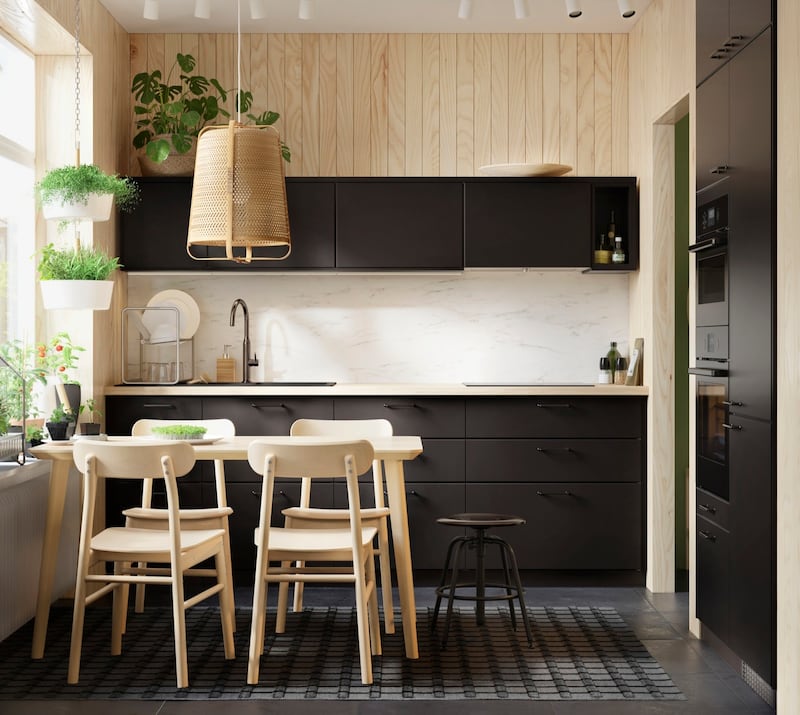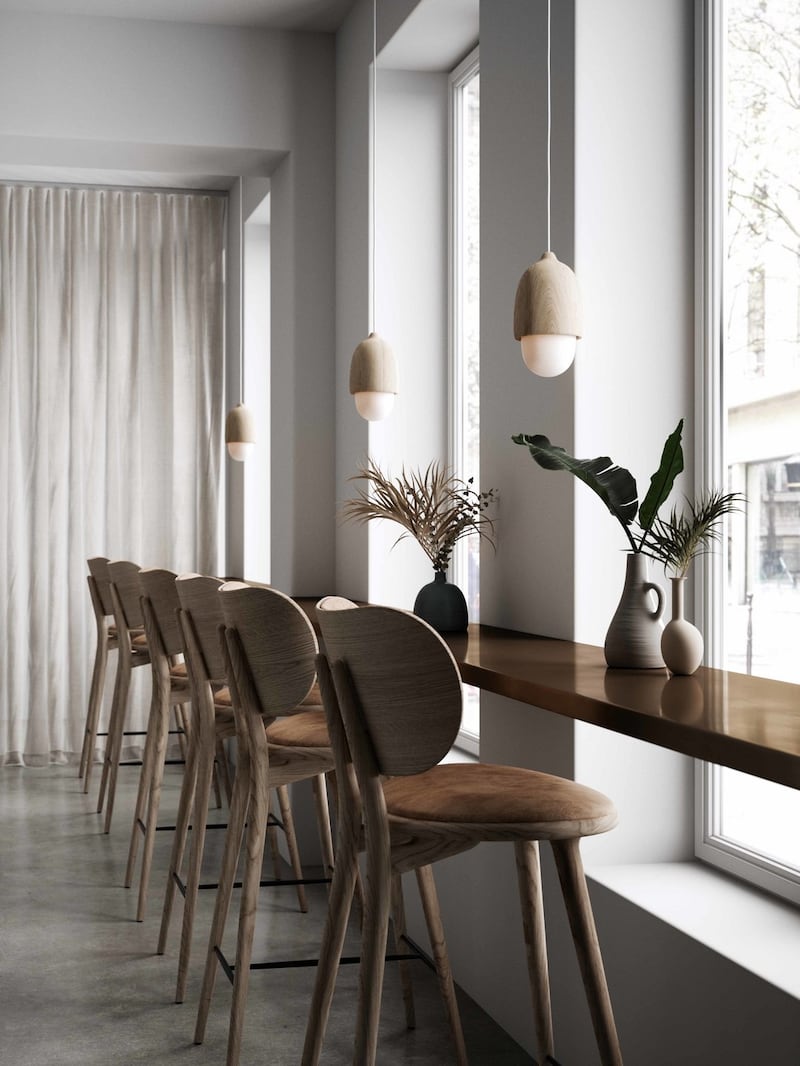Sustainability has gone mainstream, so what can you do when buying furniture for the home to up your green credentials?
When it comes to furnishing your home, it is far from easy to figure out what your piece of furniture is made of, where it was made, its carbon footprint and whether you’re committing a fast-fashion sin by buying something that won’t last the test of time – it may look great now but will its seat sag in jig time or will its legs break?
Many pieces you view in shops (when they open again) or buy online boast that they have been made using sustainable wood sources, but how many of us have ever asked to see the certification for that specific chair, sofa or dining table in question? And those who do are often served up a smorgasbord of obtuse answers that further confuse rather that help to make an informed decision. Furniture and home furnishings are big-ticket buys so when you want to buy a new kitchen, sofa or bed, how can you do so in a way that helps save the planet but also allows you to make informed purchasing decisions?
Kitchens are often considered one of the big offenders. Cabinet carcasses can be made of MDF or particleboard, and units are built in to a specific space, so when removed they are rarely reusable and often end up in a skip, though the original cost of the kitchen may have been €10,000-€30,000.
A piece of furniture of the same price would rarely suffer the same fate because it would have a resale value. But attitudes are changing, says Ed Rhatigan of bespoke kitchen company Rhatigan & Hick. He mentions a current client who is building a big new extension to his house, but has designed the space around the layout of his old kitchen so that he can repurpose it in the new space.
Rhatigan’s advice is that consumers should request a design that can be moved, that isn’t built in, though the more contemporary styles don’t lend themselves to this, he says.
“People should be asking what sustainable resources are being used in the kitchen’s fabrication.” Rhatigan & Hick uses plywood as a sheet material and European oak and poplar in its door fronts.
Weigh it up
For Pat Barry of the Green Building Council, the key sustainability question to ask is: how many times will you have to replace it in a lifetime?
“In building we measure this as being the number of times a component part has to be replaced within a 60-year life cycle. In this same context, furniture for the home has to last 20 years and then, even if you want to get rid of it, it should still have a value to someone else. If it was well-built, using high-quality materials, people will still want it in 20 years.”
Less so a gimmicky piece of furniture that lasts only five years and then ends up in a skip, he says, adding that you also have to weigh up the good with the bad. An item, for example, may have a lower carbon footprint but may not last as long.
We also need to have conversations about trends, says Barry. “Consumers are buying things that look good for five years, then become dated, and they want to replace it versus only replacing something that no longer functions. We need to choose particular styles that are not going to date.”
We also need to ask a lot more questions about how our furniture and furnishings are made, he adds – for example, kitchen doors and what are they made of. “Longevity is crucial. Classic styling and modularity [are important], where standard sizes are used so that even if you get tired with the doors, you can take them off and they will fit someone else’s presses.”
Any way found to repurpose the 100 billion PET plastic bottles used each year is commendable. Swedish retail giant Ikea is turning some of these into a plastic film that it uses to wrap around particleboard, made from recycled wood, to create its Kungsbacka kitchen door. The style comes in fashionable anthracite, sage green or white colour options and is one of several new moves by the company, says Hege Sæbjørnsen, its Ireland and UK sustainability manager.

“Covid has led to a focus on and awareness around sustainability and healthy choices,” says Sæbjørnsen. “There’s a lot of innovation happening around how we design for circularity.”
A buy-back scheme has been piloted within a few UK stores where you can return some of its furniture and get 30-50 per cent of its original value back, depending on its condition. These items are then sold on to other buyers in the bargain section. It’s a practice already used by good antique dealers.
Sustainable forests
Emily Maher, owner of Lost Weekend, an interior shop and design service based in Dún Laoghaire, has a heart-sinking moment when a customer asks about sustainability.
“Some brands we stock are, some less so. They all shout about sustainability all the time but you have to ask a lot of questions to get to the truth of their practices. Portuguese-based De La Espada is one to watch. Danish design house Mater is another. Many of the brands use trees from sustainable forests and use traditional making techniques to fabricate the pieces, often making the piece by hand, so that it’s not mass production but something special that you can keep for ever. A kitchen table, for example, can be passed down the generations. A Bauhaus chair, now officially an antique as its design is 100 years old, still manages to look contemporary.”

A sofa or bed is by its very nature less sustainable because of the use of foam in its mattresses and headboards, even the high-end marques. Irish-made mattress brand King Koil is one of the market leaders, with about 80 per cent of the luxury market here. Its Craftsman Collection, from about €1,500 for a double, is one of the most luxurious on the market and is made using fibres from recycled PET bottles and foam, and from petrochemicals, wool, cotton and even a little cashmere to pad it out.
You may have slept on its hotel equivalent if you bedded down at the Westbury, the Shelbourne, the Merrion or the Dylan, to name just a few of its Dublin clients.
And while it has made great strides to wrap its mattresses in recyclable packaging and reduce its carbon footprint, including a 40 per cent energy saving on lighting costs at its Kildare plant, there is no recycling market for its product, which often ends up in landfill, laments Conor Stapleton, its head of marketing.
“A mattress without foam doesn’t have the comfort, support and bounce that customers demand,” he says. “Although we use a new method that uses less petrochemicals, no one has cracked completely replacing foam. So what should consumers do? “Buy local. If locally made, its carbon footprint is drastically reduced.”
English sofa chain DFS seems to have gone some way to fixing the foam conundrum. It has partnered with Grand Designs on an eco range of four new seating styles whose cushions are filled entirely with a wadding made from recycled plastics, whose steel springs are recyclable and reusable and whose fabrics are from recycled polyester yarns.
Shop locally
Ciaran Finane of Irish sofa maker Finline Furniture advocates buying locally. The firm uses kiln-dried beech in its frames. Although this still uses a lot of foam, there is a degree of circularity in that it sends used foam back to suppliers, where it is reconstituted and recycled for use in future arm rests, under wadding and on footstools. The company champions reupholstering existing seating, too, and uses Irish fabric houses such as Foxford, the Co Mayo-based mill that weaves its own, or bought-in ranges supplied by Liberties-based Botany Weaving. The sofas and chairs it originally supplied to the recently remodelled Heritage in Killenard, Co Laois, 14 years ago, which have all been reupholstered to give them a completely new look, is a good, large-scale example and a model more hospitality clients should be emulating.


Furniture company Takt has a model that’s worth looking at. Every phase in its product range life cycle is engineered to minimise waste and CO2. This includes selling its upscale chairs and tables in a flatpack format to cut down on volume for transport. All key elements can be recycled, and worn parts replaced. It also sells direct to consumers in an effort to keep costs down but this does amp up CO2 levels for Irish shoppers.
These are all great steps in the right direction. But for the consumer the problem remains that for now when shopping you really have to do your own due diligence and question the promises being made by companies to see if they actually stack up.










